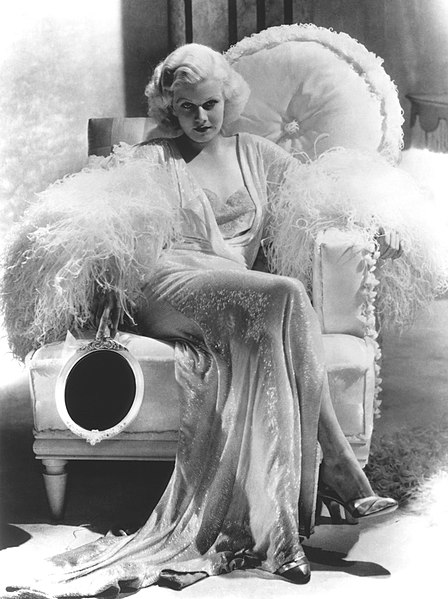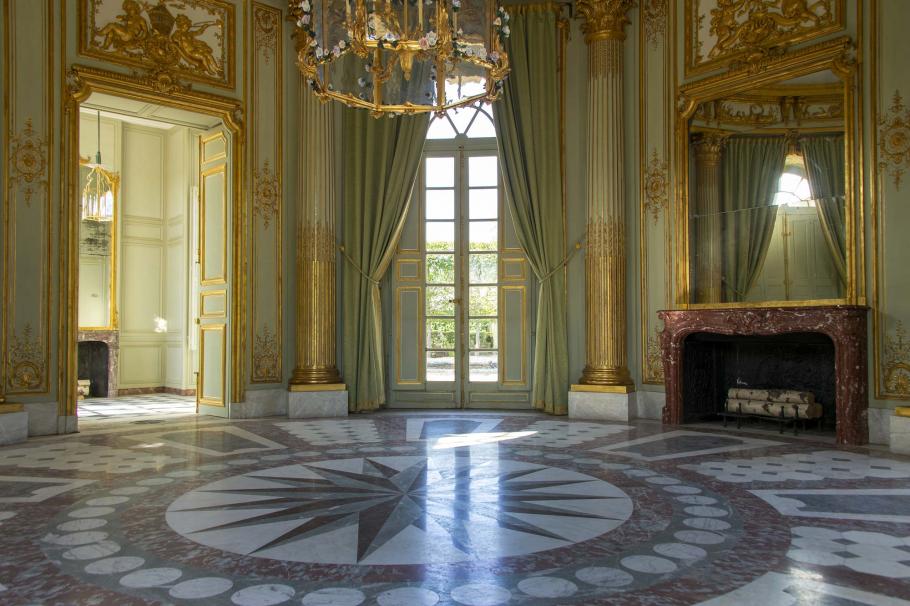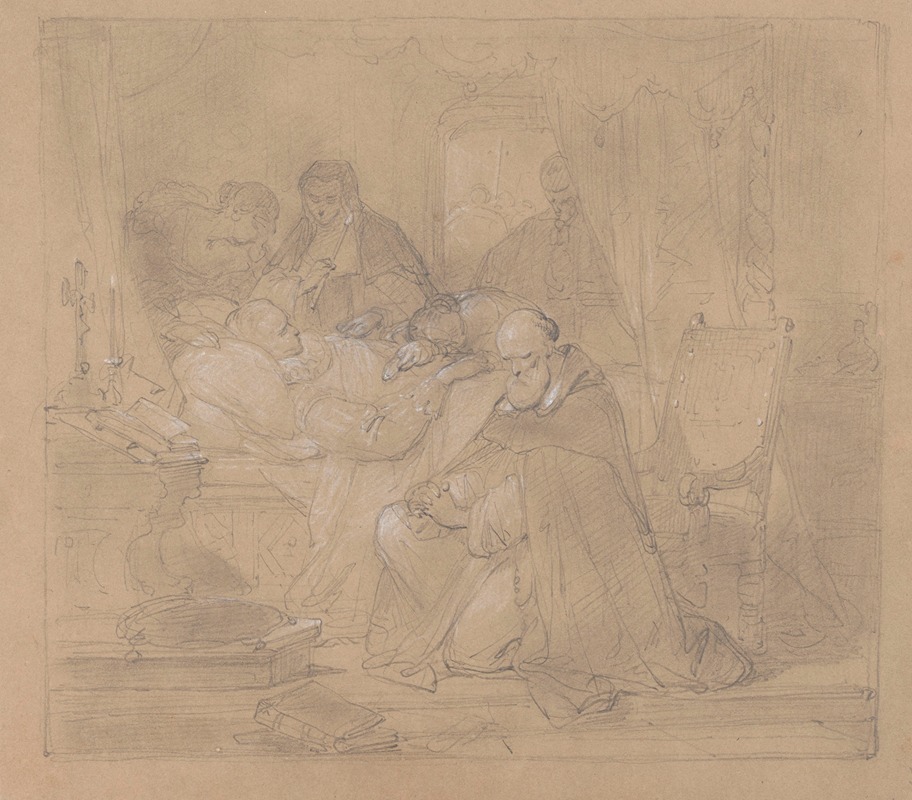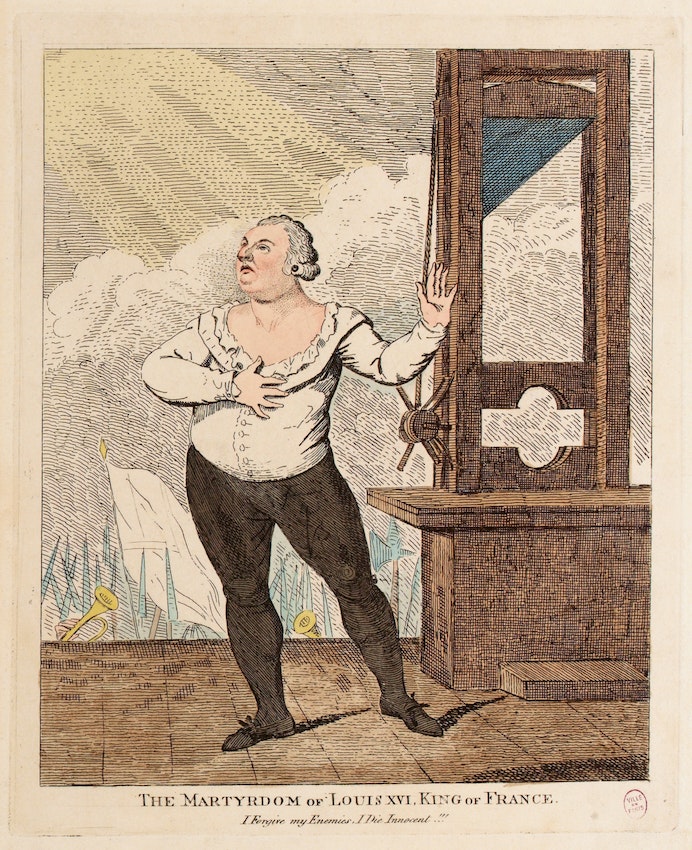From Tatiana's Tea Room:
The French Pavilion (le pavillon français) which now stands as the central gem of the Petit Trianon’s formal French Gardens was actually completed in 1750, a few years prior to the building of the Petit Trianon itself. Designed by the Louis XV’s chief architect Ange-Jacques Gabriel at the instigation of Madame Pompadour this miniature palace was intended as a summer gaming/dining room. Thirty years later, Marie Antoinette would also use it for private concerts given by lantern light. The main salon is octagonal with an inlaid marble floor and is surrounded by four cabinets in a cruciform arrangement. The walls are gilded with cherubs highlighting each entrance. Cherubs & birds are also featured on the circular cornice which is supported by eight Corinthian columns. Four arched French doors provide light, exterior views and access. (Read more.) ShareSaturday, September 30, 2023
Wire Transfers From China
From American Greatness:
Hunter Biden’s Chinese business partners wired more than $250,000 to him during the summer of 2019 and listed Joe Biden’s Delaware home as the beneficiary address for the funds, the House Oversight Committee revealed Tuesday evening. The transactions represent one more piece of evidence gathered by House Republicans showing that Joe Biden was involved in his son’s shady business schemes.
A few months after Joe Biden announced his candidacy in 2019, information available to the Committee shows Hunter Biden received two wires from China for $250,000 and $10,000, including from Jonathan Li.— Oversight Committee (@GOPoversight) September 26, 2023
For the Sake of a Crown
The marriage of John of Gaunt to Constance of Castile. From History...the Interesting Bits:
Constance of Castile was born in 1354 at Castro Kerez, Castile. Her father was Peter, or Pedro, king of Castile. Although he had earned himself the nickname of Peter the Cruel, he was also known as Peter the Just, depending on whether you were talking to his enemies, or his friends. In 1353 18-year-old Peter had married, in a secret ceremony, Maria de Padilla, who would bear him 4 children; of which Constance was the second oldest.
In the summer of the same year, a couple of months shy of his 19th birthday, on 3rd June, Peter had been practically coerced into marriage with 14-year-old Blanche de Bourbon, by his mother, Maria of Portugal, and his counsellors. Blanche was the daughter of Peter I, Duke of Bourbon, and Isabella de Valois; through her mother, Blanche was a cousin of the king of France. As a consequence of the marriage, Peter was forced to deny that a marriage ceremony with Maria ever took place. However, almost immediately after the wedding, Peter deserted his new bride and returned to Maria.
Blanche was imprisoned in the castle of Arevalo. Her cousin, Jean II, King of France, called for her release and asked the pope to excommunicate Peter for imprisoning her. The pope, Innocent VI, refused. Blanche was eventually moved to the town of Medina Sidonia, far remote from any possible rescue by Peter’s enemies from Aragon or France. It was at Medina Sidonia that Blanche died in 1361, though whether by murder or from natural causes is disputed (but that is a story for another time…).
Peter was married again, in 1354, to Juana de Castro, with whom he had a son, John. Despite the marriage, his relationship with Maria de Padilla endured. Peter and Maria were together until Maria’s death in 1361, probably from plague, and they had 3 daughters and a son. Although their son died young, their 3 daughters grew to adulthood. The eldest, Beatrice, entered the Abbey of Santa Clara at Tordesillas and so it would be Constance who eventually became her father’s heir.
Little is known of Constance’s childhood. She was around 7 when her mother died, her sister Isabella was a year younger and their baby brother, Alfonso was about 2. Alfonso would die in 1362. (Read more.)
Friday, September 29, 2023
On the Waterfront (1954)
From Tony Esolen at Word and Song:
The priest leans over the body of a dead man, who has been crushed to death on the docks — a murder made to look, barely, like an accident. For Kayo Dugan was about to testify against the corrupt union boss, Johnny Friendly, and his henchmen, and their protection racket. “Some people think the Crucifixion only took place on Calvary,” says Father Barry (Karl Malden), who himself can throw a mean punch when the need demands it. “They better wise up! Taking Joey Doyle's life to stop him from testifying is a crucifixion. And dropping a sling on Kayo Dugan because he was ready to spill his guts tomorrow, that's a crucifixion. And every time the Mob puts the pressure on a good man, tries to stop him from doing his duty as a citizen, it's a crucifixion. And anybody who sits around and lets it happen, keeps silent about something he knows that happened, shares the guilt of it just as much as the Roman soldier who pierced the flesh of our Lord to see if he was dead.”Share
It’s hard for people these days to say anything about our Film of the Week, Elia Kazan’s magnificent On the Waterfront, without appealing to the social and political circumstances surrounding it. Not that they’re wrong to make the appeal. Kazan was a formidable social critic. He took on prejudice against Jews in Gentlemen’s Agreement. He took on racism and its cruelties in Pinky. He was himself the son of Greek parents who had fled from persecution in the Ottoman Empire. He hated communism, and for a very long time he was hated in turn by people who held it against him, that he had testified before the House Unamerican Activities Committee. Yet his films are dramas of good and evil as they go to battle in the human soul, and the price we must pay, in our own persons, lest evil should triumph. (Read more.)
The Jaguar
From The History Desk:
The Jaguar automobile is also sleek, fast and fit transportation for a god. But we humans can have one as well. Some of you will prefer the newer models, like the I Pace, which is an EV. Jaguars also have the fuel injectable, a sedan, and a SUV. The sports model is the F type. It comes in both a coupe and convertible. The convertible will set you back $115,000.Share
Of course, it is the sporty version I dream of. But not for 2023. I’m looking backwards, to 1959.
I am a historian. I am always looking backwards. And, assuredly, there is stuff back there that is way superior to the stuff we have today. Like the Jaguar XK 150 roadster.
Be still my heart!
Being a girl who will only drive red cars, of course, I will want it in red. Like the one in the picture. Continuing on with my most self-centered rant today, I also want suits made my Chanel, Balmain, and Dior.
Okay, ask the question, are suits by Chanel, Balmain and Dior, circa 1959, better looking than the ones made today? Yes! Indeed, any suit made in 1959 is better than most suits made today. Both for women, and men.
I don’t complain about workmanship, mind you. I am speaking strictly of style. The classy stuff. As in elevating one’s game, overall, in life.
So, what is my evidence that things, style wise, are descending into a pit?
I offer up, exhibit A: Fetterman, from Pennsylvania, dressing in gym clothes to take his seat in the senate.
Fetterman’s lack of decorum, is simply the latest signal that our society is being swallowed by the muck and mire that have brought us to this place. Men who sing, not of sophisticated ladies, but of whores, well, consider that exhibit B. Exhibit C? The love affair of clothing that stretches to reveal every curve and profusion of the human body. And Exhibit D, is the morbid obesity we see, every day, on the streets. Where is either self respect or self love, when 30% of the population cram junk food into their mouth, every damn day? (Read more.)
King Alfred and the Cakes
Another cake legend. From the Eureka Alert:
King Alfred burned the cakes, right? Wrong. For a start they were loaves – and for another thing, the Vikings reckon their terrifying-sounding hero Ragnar Hairybreeks should take the blame for this ninth century catering disaster. University of Leeds professor Rory McTurk says the tale of Alfred and the cakes is probably the one story we all know about the Anglo-Saxon ruler, a detail as closely woven into popular history as Robert the Bruce being inspired by a spider and King Harold getting an arrow in the eye. But he insists it may be mere propaganda, from a time when much of Britain was under Viking control – the Danelaw – and when both sides used stories to bolster their own position and blacken the names of their enemies.
Prof McTurk, of the University's School of English, says the story was used to mark a watershed in the conflict. "Alfred had suffered a series of defeats by the Viking armies – and was virtually in flight at the time," he said. "The story says he took refuge in Athelney, Somerset, where a swineherd's wife left him to watch the loaves cooking beside the fire. But Alfred was distracted by thinking hard about his fate and about how to fight back – and the loaves burned. The woman reproved him, not realising he was the King." The English used the story to mark a turning point in his life. "Whether or not the legend is true, Athelney was of massive significance to Alfred," explained Prof McTurk. "He built a fort, rallied his troops and from this point onwards did much better against the Vikings."But the Vikings had their own stories, tales passed down by the invaders to justify their reasons for being in England. "The hero of one of their stories, Ragnar Hairybreeks, burned loaves too," he said, adding that the change from "loaves" to "cakes" in the story is a much more recent development. "The English stories portray the Vikings as devils," said Prof McTurk. "The slaying of King Aella of Northumbria in York in 867 is an example – the Vikings carving an eagle into Aella's back, and ripping out his lungs in a horrific sacrifice. But the Viking tradition re-tells the story as a justified act of revenge." Over the 200 years that followed, the Viking settlers gradually assimilated into the population, but even after the Norman conquest they maintained contact with Iceland, the Orkneys and mainland Scandinavia. And the pro-Viking stories of the Danelaw period were re-told in the Icelandic sagas. (Read more.)
Thursday, September 28, 2023
Like a Glassy Riverboat
From Architectural Digest:
“This house needed to be a pavilion that was about the new honeymoon period in their life, with the children grown,” says architect Bobby McAlpine of the contemporary abode he crafted for his clients, European antiques dealer Susan Roland and her husband, Jim, in St. Francisville, Louisiana. “It’s not meant to house everybody, but it is meant to feed and entertain [all].”
Situated on a 450-acre property, at the edge of a 34-acre lake, the wood, glass, and steel home has only one bedroom, but its numerous indoor and outdoor gathering spaces are expansive and welcoming. When visiting, the Rolands’ six children and their grandkids, as well as out-of-town guests, stay in one of the compound’s other houses, which include a total of 16 bedrooms and are all located a short stroll or golf cart ride away. “We thought, We’re getting into retirement age…. Where do we want to be?” Susan says of their early discussions around building a new primary residence. “It’s absolutely right here on this lake.”
The Rolands had long been admirers of McAlpine’s work—and his firm was a well-established patron of Susan’s own Fireside Antiques in Baton Rouge—so the decision to contact him about the project was easy. Although the architect’s signature style, a sublime mix of soaring gables and natural materials, was what initially drew the couple to him, McAlpine recognized right away that this project called for a somewhat novel approach.
“The house needed to be a glass box—it had views all around,” he says of his unusually low-slung vision, which incorporated a parapet roof. “I wanted it to be almost like a louvered, modern riverboat sitting there on the water, because it’s [in] an extremely Southern context, with moss-laden trees.” McAlpine was able to warm up the modernism by creating texture—adding densely beamed ceilings, window panes instead of plate glass, and a wall of operable shutters on the exterior. “All of those are elements that drink you in and don’t reflect or repel you,” he notes, “They absorb you.” The same can be said of the hand-cut stone and the 18th-century white oak floors, which, he adds, provide “an enormous amount of character.”
With the architectural concept in place, devising a scheme for the interiors naturally fell to Susan and her daughter, interior designer and Fireside co-owner Laura Roland. They soon fell into a regular pattern over a two-year planning period, in which Susan, on site, would talk with Laura, based at their company’s 18,000-square-foot showroom in nearby Baton Rouge, about the various items on their checklist. Certain anchor pieces—such as a monumental 19th-century oak bibliotheque for the kitchen and a pair of back-to-back 18th-century limestone mantels for the salon and dining porch—were discovered during their quarterly buying trips to Europe and inspired much of what would populate the rest of the rooms. “To be able to find two of those was such a miracle,” says Susan of the rare fireplace surrounds from France’s Cognac region, where, at the bottom of a quarry, they also sourced 40 containers of nearly identical limestone for the porches, patios, and study. “You have these clamshells, mollusks, and all these wonderful little creature fossils that were in the stone.” (Read more.)
Share
$10 Million Each Day
From Breitbart:
New York City is paying $385 a night per migrant family while some of them are making $3,000 a month working illegally as delivery drivers. Migrants are costing the city $10 million each day, according to Manhattan Borough President Mark Levine, the Daily Mail reported. Migrants staying at the Roosevelt are being fed and their rooms are being cleaned. With all of their expenses met, some migrants and asylum seekers have taken up part-time work as delivery drivers for Uber, which is illegal for them to do. A 24-year-old Venezuelan man has made $1,500 every two weeks just from delivering food. The Daily Mail reports that the migrants do not have driver’s licenses, and many of them are driving scooters without license plates. (Read more.)Share
Birds and Weird Dinosaurs
There is still so much to discover. From Nature:
One hundred and fifty million years ago, a young, bantam-sized, bird-like dinosaur became mired in a swamp in what is now southeastern China, and succumbed. Its fossilized remains, unearthed in 2022 and named Fujianvenator prodigiosus, show it to be one of the earliest bird-like dinosaurs to date from the Jurassic period. The researchers describe their discovery in a paper published today in Nature1.
“This is really a weird animal within the group of birds,” says Mark Loewen, a palaeontologist at the University of Utah in Salt Lake City, who was not involved in the discovery.
The creature had oddly lanky legs and might have lacked the ability to fly. It also doesn’t seem to conform to the accepted bird-evolution story.
Although dinosaurs were largely extinct by 66 million years ago, therapods, the three-clawed, hollow-boned group that included Velociraptor and Tyrannosaurus rex, had started to evolve into today’s birds. Many palaeontologists consider the first bird to be a 150-million-year-old feathered dinosaur called Archaeopteryx, fossils of which were found in Germany. But this study adds to mounting evidence that by the time of Archaeopteryx, dinosaurs had already diversified into different kinds of birds, Loewen says.
Hailu You, a palaeontologist at the Chinese Academy of Sciences in Beijing and one of the co-authors of the paper, says that in the Jurassic, bird-like dinosaurs might have been occupying different ecological niches. “Early bird evolution is complicated,” he says.
Fujianvenator’s fossil lacks a head and a complete tail, but its body and limbs show a medley of traits similar to those of other bird-like dinosaurs, such as the relative lengths of the fingers, and details of the pelvis and vertebrae.
But it didn’t have many modifications that would contribute to flight. For example, it had a shortened shoulder blade and fingers more specialized for grabbing. Strangest of all are the bird’s hyper-elongated hind legs, in which the lower leg bone — the tibia — is twice as long as the thigh bone. Such long legs indicate a highly skilled runner, perhaps similar to a roadrunner (Geococcyx spp.), says Bhart-Anjan Bhullar, a palaeontologist at Yale University in New Haven, Connecticut. (Read more.)
Share
Wednesday, September 27, 2023
White Queens
Queen Camilla in Paris. From The Court Jeweller:
For a busy day of engagements in Paris, Queen Camilla wore a white coat over a printed dress, paired with spectator pumps. When a Queen of the United Kingdom wears white in Paris, it’s hard not to see a callback to one of the most famous royal wardrobe moments of the past: the white wardrobe worn by Queen Elizabeth the Queen Mother in Paris during the 1938 French state visit. The unexpected passing of Elizabeth’s mother, the Countess of Strathmore, had caused the 1938 visit to be pushed back several weeks. Elizabeth worked with her favorite couturier, Norman Hartnell, to alter her wardrobe for the visit. Rather than making black mourning clothes for the Queen, Hartnell pointed out that white was traditionally a color of royal mourning, and Elizabeth agreed to have her wardrobe for the trip remade using only white fabrics. (Read more.)
 |
| 1938: Queen Elizabeth the Queen Mother in Paris with George VI |
Share
Bomb Threat Against Andy Ngo
From The Post-Millennial:
An official member of the Democrat Party in Richmond, Virginia, posted a bomb threat against journalist Andy Ngo on Friday. Jimmie Lee Jarvis, the owner of Mission Control Research and Consulting in Richmond, posted the bomb threat on X ahead of Ngo's speaking event organized by The Virginia Council and Common Sense Society at the Commonwealth Club in Richmond, Virginia. According to the official website of Richmond Democrats, Jimmie Lee Jarvis is listed as an official member of the Richmond City Democratic Committee. Jarvis' threat was one of many that came from radical leftists ahead of Ngo's speaking event, which resulted in two venues pulling out at the last minute.
While Ngo, senior editor of The Post Millennial, explained that the event was ultimately a success after the third venue refused to cave to the coordinated campaign attack of threats issued by Antifa and other far-left activists, Marriott forced the Westin to cancel the venue just hours before it was set to kick off on Friday. Earlier in the week, the Commonwealth Club pulled out from allowing its venue to be used for the event following harassment and threats of violence. (Read more.)
Share
The Girl and the Faun
From CrimeReads:
Years later, after she had become one of the world’s most successful fiction writers, Agatha Miller–now known to her vast reading public as Agatha Christie–retained great fondness for the elder author who had given her youthful writing promising words of praise. In 1932 Christie dedicated her widely admired Hercule Poirot detective novel Peril at End House, which is set at a fictionalized Torquay, to her onetime mentor, in gratitude “for his friendship and the encouragement he gave me many years ago.” When Eden Phillpotts died on December 29, 1960, at the venerable age of ninety-eight, Christie, then herself seventy years old, penned a short but affectionate newspaper tribute to him, singling out for praise his 1910 children’s novel The Flint Heart. (There is scarcely a fiction genre which Phillpotts left untouched during his eight decade writing career.) In her posthumously published Autobiography (1977), Christie again warmly praised Phillpotts, memorably recalling him as “an odd-looking man, with a face more like a faun’s than an ordinary human being’s.”Share
Certainly Eden Phillpotts was no ordinary human being. An extraordinarily prolific author (even more so than Agatha Christie), Phillpotts from his longtime fastness in Devon, where he relocated from London around 1890 (the year Agatha Christie was born), published, it is said, over 250 books, including almost 120 novels, about a third of which are works of crime, adventure and mystery fiction. Back in 1909 he had told Christie, concerning her novel Snow upon the Desert: “You have two plots here, rather than one, but that is a beginner’s fault; you soon won’t want to waste plots in such a spendfree way. ”With ever so many books left to write, Phillpotts himself emphatically was not one to waste plots.
Eden Phillpotts’ last novel–entitled, appropriately enough, There Was an Old Man (it is not a mystery)–was published in 1959, just a year before the Old Man died. His final mystery novel, George and Georgina, appeared but seven years earlier in 1952, when the author had entered his ninetieth year. This was just over seven decades after the appearance of his first mystery adventure tale (and first published book of any sort), the Queen’s Quorum novella My Adventure in the Flying Scotsman, which Phillpotts published in 1888, when he was twenty-five years old. It appeared in book form the same year as did his contemporary Arthur Conan Doyle’s debut Sherlock Holmes adventure, A Study in Scarlet. (Read more.)
Tuesday, September 26, 2023
The Tragedy of Jean Harlow
 |
| Jean Harlow |
 |
| Harlean Carpenter aka Jean Harlow |
Recently, as part of my exploration into the decline of Western Civilization, I read Harlow in Hollywood: The Blonde Bombshell in the Glamour Capital, 1928-1937 by Darrell Rooney and Mark A. Vieira. I enjoy reading about the old movie stars, many of whom were great artists in spite of the degradation of living in Tinseltown. I have been criticized for blogging about Marilyn Monroe, because she has been seen as a part of America's slide into depravity, although what Marilyn really wanted was to be a great actress, not a sex symbol. Before Marilyn Monroe, there was Jean Harlow, whom Marilyn modeled herself upon and hoped to portray in a biopic before her own untimely and unexpected demise. Harlean Carpenter aka Jean Harlow had no stage training and ended up in movies almost by accident. Her naturally tow-headed, green-eyed beauty attracted the attention of producers. While free of any illusions that she was an actress, Jean had a natural charisma and presence, in spite of her diminutive stature. Once she became aware that acting was a craft she tried to learn it, and worked very hard at improving her screen performances. She had a photographic memory and after a cursory glance at a script she knew it by heart. She learned to make people laugh and with the right directors became a comic genius.
Aware that she was being exploited for her body, Jean strove to improve her mind by reading; her dream was to be a novelist and she actually did write one. Other than her literary ambitions, Jean loved children and longed to be a wife and mother. Jean hated playing what she called "sex vultures" and wanted to play "good girls" so she was actually glad when the Hays Code made the studios tone down their lurid sleaziness. Jean Harlow gradually became a top star as the original platinum blonde. However, fame can be a harsh taskmaster. The studio make-up poisoned her; constant bleaching to maintain the platinum mane made her hair fall out.
Jean was popular with her co-workers for her sweet and childlike personality. Everyone, including her mother, called her "Baby" or "the Baby." No one seemed to think it was bizarre that an extremely unsophisticated woman, whom everyone infantilized and treated as a small child, was a major sex symbol, and repeatedly reduced to her physical assets. In demeanor she was completely unlike the sultry roles she played. Not that she did not have affairs and three attempts at marriage. But her outlook on life remained hopeful and innocent, until William Powell broke her heart.
Jean once confided to a friend that she had been sexually assaulted by a male relative as a child. Maybe it was why she was psychologically frozen at age twelve. Perhaps that was why she was incapable of becoming emotionally independent from her mother. While married as a teen to her wealthy first husband Jean became pregnant, but since she had just started in movies her mother forced her to have an abortion. Later, when she was a star, she became pregnant by her co-star William Powell. Powell did not know of the pregnancy but he had already told her that he would never marry her; after having been married to Carol Lombard he did not want another actress wife. So Jean's mother dragged her to the hospital for a special "operation," another abortion. Jean was noticeably different afterwards, very depressed. She eventually collapsed from kidney failure, caused by a youthful bout of scarlet fever. She died in the same hospital room where she had had her second abortion.
From All That's Interesting:
Born on March 3, 1911, in Kansas City, Missouri, Harlean Harlow Carpenter had simple childhood dreams and hoped to become a writer. It was her mother who wanted her to become the star that she never was. As Harlean's mother got divorced, relocated, attempted to break into the movie industry, and eventually remarried, the young girl suffered from numerous childhood illnesses, including meningitis and scarlet fever. By the time Harlean was 16 years old, she had eloped with a wealthy young man named Charles McGrew and relocated to Beverly Hills. There, she was noticed by movie executives and began to receive offers to appear in films. Much to the delight of Harlean's mother, she decided to give acting a try. Harlean and McGrew soon divorced, as he didn't support her pursuing a career in Hollywood. But Harlean, who started using her mother's maiden name as Jean Harlow, was about to start an exciting new chapter. (Read more.)
From Country Living:
Harlean was discovered by Fox executives while she was visiting a movie lot with a friend. Apparently, she wasn't all that interested in becoming a star, even giving them a fake name: her mom's. But certainly, they were interested in her—or at least, in her look: a glamorous blonde with killer curves. At the insistence of Mother Jean, the newly dubbed Jean Harlow began auditioning and appearing in Laurel and Hardy shorts and even left her husband when he expressed opposition to the idea of her acting.
Though she had just a small part in the 1929 film The Saturday Night Kid, Jean all but stole the show from the lead, Clara Bow, the "It Girl" starlet of the time. Her big break was in Howard Hughes's Hell's Angels (1930), in which she replaced the original lead, silent film star Greta Nissen, who spoke with a thick Norwegian accent and therefore couldn't, in the director's mind, transition to the "talkies". (Read more.)
 |
| Jean Harlow in Dinner at Eight |

Hit-and-Run for Fun
Watch the video. From The Post-Millennial:
ShareDuring their alleged crime spree last month which left retired police chief Andreas Probst, 64, dead, Jesus Ayala, 18, and Jzamir Keys, 16, allegedly tried to run over a second cyclist in a stolen car. A source told 8 News Now that the pair allegedly stole three cars, committed a burglary, hit and killed Pobst, and tried to run over a second cyclist over the course of two hours. Alaya and Keys were arrested last week after a video went viral on social media of the teens appearing to intentionally drive a vehicle into a person riding a bicycle. During the video, which is seemingly filmed by a passenger in the front seat, a person can be heard saying, "Alright go, go go go," before sideswiping another car.
"B**** ass n*****!" One person yelled. "Stop talking sh**, b****!"
"Get his a**," one voice says just before the car hits a man on a bicycle. "That n**** knocked out!" one voice said afterward.
Ayala claimed to police that he would get a slap on the wrist for the incident. "You think this juvenile **** is gonna do some *****? I'll be out in 30 days, I'll bet you," he said.
"It's just ah ... ah, hit-and-run, slap on the wrist," he said, even though the cops never mentioned the incident to him.
On Wednesday, a judge ruled that the two suspects would be charged as adults in the Las Vegas Justice Court. Both have been charged with murder with a deadly weapon, battery, and attempted murder. (Read more.)
Sheltering Jews during the Nazi Occupation of Rome
From Crux:
Though the role of church-run institutions in sheltering Jews during the Nazi occupation of Rome was already well know, the discovery of a list of all those who took refuge previously believed to be lost has added new historical detail.Share
The list, found in the archives of the Jesuit-run Pontifical Biblical Institute in Rome, indicates that some 4,300 persons were sheltered between September 1943 and June 1944, when Rome was liberated by Allied forces. Of that number, 3,600 persons are identified by name on the list, and of those, at least 3,200 were Jews, researchers say, a finding confirmed by comparing the list with archives maintained by the Jewish community of Rome.
In all, at least 100 women’s religious orders and 55 men’s communities, as well as parishes and other Catholic institutions, provided places of refuge during the German occupation.During the period of Nazi occupation of Rome, at least 2,000 Jews, including hundreds of children and adolescents, were killed out of a total community estimated at the time between 10,000 and 15,000 people. Most died in the Auschwitz-Birkenau camp after a roundup of Roman Jews in mid-October 1943.
News of the discovery of the list of those rescued was presented Thursday during a conference at the Holocaust Museum of Rome titled, “Saved: The Jews Hidden in Religious Institutes of Rome (1943-44.)” Organizers said the list has not yet been made public “for reasons of privacy,” presumably to provide an opportunity to inform family members and descendants of the people identified.
“We know where they were hidden and, in some circumstances, their places of residence before the persecution,” said a joint statement from the Pontifical Biblical Institute, the Jewish Community of Rome and Yad Vashem. (Read more.)
Monday, September 25, 2023
Death of Marie de' Medici
A sketch depicting the death of Marie de' Medici, Dowager Queen of France. She died in a brewery in Cologne in a state of destitution, abandoned by her son Louis XIII, who would not allow her to die in France, although he had her buried there. Mercifully the Queen received the ministrations of the local Carmelites, to whom she bequeathed her cherished statue of Our Lady of Scherpenheuvel. From Artvee:
Nicaise de Keyser was a Belgian painter of mainly history paintings and portraits who was one of the key figures in the Belgian Romantic-historical school of painting. He received his painting tuition at the Antwerp Academy of Fine Arts under Jozef Jacobs and Mattheus Ignatius van Bree. After 1835 he made many travels including to England and Scotland, Paris and Italy. He married the genre painter Isabella Telghuys on 6 October 1840. In 1846, he was elected to the National Academy of Design as an Honorary Academician.
When in 1855 the leading Belgian Romantic painter Gustave Wappers resigned as director of the Antwerp Academy, de Keyser succeeded him. As with the work of other Belgian history painters such as Edouard de Bièfve, Ernest Slingeneyer and Louis Gallait, there was particular appreciation for Nicaise de Keyser's history paintings in German-speaking Europe. De Keyser regularly travelled to Germany and in 1873 he was awarded the famous Prussian order "Pour le Mérite". Despite his great success and fame throughout his lifetime, his work, like that of the other Belgian Romantic painters, was quickly forgotten in the 20th century. (Read more.)
Share
Prosecutors Blocked Hunter Biden Charges
ShareWaldon’s transcribed interview comes after he previously confirmed Shapley’s claims in April of political interference. Waldon later left the Hunter Biden case for another responsibility within the IRS. As the investigation progressed, Weiss never charged Hunter Biden in the jurisdictions of Washington, DC, or California. Instead, he formed a sweetheart plea agreement with Hunter Biden that collapsed in July under judicial scrutiny. Shapley’s testimony in April reportedly triggered the plea deal, filed in Delaware. Weiss later brought three gun-related charges in Delaware against Hunter Biden. The recent testimony by Waldon, who was Shapley’s boss, is notable because Attorney General Merrick Garland testified Wednesday that nobody had the authority to block Weiss from charging Hunter Biden, though “they could refuse to partner with him.”
“You said [Weiss] had complete authority, but he’d already been turned down. He wanted to bring an action in D.C. and the US Attorney there said, ‘No, you can’t’ — and then you go tell the U.S. Senate, under oath, that he has complete authority?” House Oversight Committee Chair Jim Jordan (R-OH) asked.
“No one had the authority to turn him down; they could refuse to partner with him.” Garland replied.
“You can use whatever language — ‘refuse to partner’ is turning down,” Jordan replied.
“It is not the same under a well-known Justice Department practice,” Garland claimed.
Waldon previously confirmed Shapley’s notes presented to Congress regarding an October 7, 2022, meeting between Waldon, Shapley, and Weiss, among others. “Darrell asked me to shoot an update from today’s meeting. Darrell — feel free to comment if I miss anything,” the top line of the email read. In point two of the email to Waldon, Shapley recapped that “Weiss stated he is not the deciding person of whether charges are filed. I believe this is a huge problem — inconsistent with DOJ public position and Merrick Garland testimony.” (Read more.)
Ancestral Bottleneck
From Popular Science:
A team of scientists from the United States, Italy, and China may have finally explained a large gap in the African and Eurasian fossil record. According to a model in a study published August 31 in the journal Science, the population of human ancestors crashed between 800,000 and 900,000 years ago. They estimate that there were only 1,280 breeding individuals alive during this transition between the early and middle Pleistocene. About 98.7 percent of the ancestral population was lost at the beginning of this ancestral bottleneck that lasted for roughly 117,000 years, according to the study.Share
During the Late Pleistocene, modern humans spread outside of the African continents and other human species like Neanderthals began to go extinct. The Australian continent and the Americas also saw humans for the first time and the climate was generally cold. This era is best known for its massive ice sheets and glaciers that shifted around the planet and shaped many of the landforms we see on Earth today...(Read more.)
Sunday, September 24, 2023
Susan Spicer’s Garlic Soup
ShareAnyone who’s ever tasted a smooth, creamy bowl of this aromatic creation immediately understands its staying power. It’s not a soup you expect or soon forget, and it’s one worth traveling all the way to New Orleans for, especially given the labor of love that goes into each bowl. “In the early days we had to peel all the garlic by hand,” Spicer says. “We’d peel ten pounds of garlic.”
And not just any garlic. “It might be a mental thing, but it has to be California garlic. It’s the best,” she says. Beyond the sourcing, the magic is in the preparation. “I caramelize the garlic and onions in butter and garlic—low and slow so it doesn’t burn,” she says. A bouquet of herbs enhances the flavor without distracting from the star of the show.
At Bayona, Spicer and her team make two big batches twice a week, letting the flavors come together as the soup sits. Just before serving, it’s finished with a bit of cream, but not too much since the soup’s thickness comes primarily from the bread. “The cream tones down the intensity a bit,” she says.
Add a glass of a light red wine, Spicer’s own recommendation for a pairing, and know that the first spoonful is all it takes to understand how garlic, broth, and some stale bread come together in the perfect marriage of simplicity and indulgence. (Read more.)
America’s Black Market On The Border
From The Federalist:
The Federalist brings viewers face-to-face with migrants at the Texas border, where their desperate bids for entry inevitably cross paths with powerful cartels. From shelters to the Rio Grande, “Cartel Country” goes where most of the media won’t, revealing a tragic reality they ignore: America’s byzantine border policies enable a vast black market for human smuggling. (Read more.)
Share
Napoleon Cast & Character Guide
From Screen Rant:
The Napoleon cast brings together Oscar winners and newcomers to tell an epic account of one of history's most fascinating figures — Napoleon Bonaparte, the infamous French General and unrivaled military strategist. Legendary director Ridley Scott takes on the massive historical drama which stars Joaquin Phoenix as Napoleon Bonaparte, in a story of his origins and rise to power as he became emperor with his complex relationship with his wife Josephine (Vanessa Kirby) at the center of it all. While much attention is being paid to the two main roles and how these actors will handle them, the Napoleon cast is filled with great actors bringing people in Napoleon's journey to life. (Read more.)
Share
Saturday, September 23, 2023
Our Lady of Britannia
Share
The Demise of Objective Social Standards
From The American Thinker:
On Thursday afternoon, a spokesman for Sen. Joe Manchin (D-W.V.) said he would file a bipartisan resolution next week "to ensure the Senate dress code remains consistent with previous expectations." But as of this writing, Fetterman's exceedingly "casual" dress has been granted a senatorial imprimatur of legitimacy. Indeed, on Wednesday, Fetterman presided over the entire Senate wearing a short-sleeve shirt, no tie, and shorts.
Fetterman's appalling sense of dress and Schumer's capitulation to it can be seen as part of the Left's broader, sustained attacks on the norms of many venerable institutions. (We are, after all, reliably informed by many wokesters that the very structure of the Senate -- two members per state, regardless of the population -- is a throwback to "white supremacy.") But the koshering of Fetterman's sartorial slovenliness bespeaks a trend both greater and more pernicious than the wokes' now-trite attacks on American traditions: the failure to recognize and uphold objective social standards. (Read more.)
From The Federalist:
Others would suggest that we get the leaders we deserve. If senators want to show up in basketball shorts and hoodies, as is the uniform of Sen. John Fetterman, let the people see how unrespectable they are. The system itself is no longer worthy of respect, and its appearance should reflect that. If senators want to wear clown clothes, all the better.
Of course, we must acknowledge that such a casual dress code is not ideal, but it’s certainly a silver lining when the people wake up and see that the emperor has no clothes. Perhaps voters will see what’s what and demand a course change. (Read more.)
Share
Joanna of England
Youngest daughter of Henry II and Eleanor of Aquitaine. From History...the Interesting Bits:
Joanna of England was born in October 1165, the 7th child and youngest daughter of Henry II of England and Eleanor of Aquitaine. Ten years younger than her eldest brother, Henry the Young King, she was born at a time when their parents’ relationship was breaking down; her mother would eventually go to war against her husband, before being imprisoned by him for the last 16 years of Henry’s reign.
Born at Angers Castle in Anjou, Christmas 1165 was the first ever Christmas her parents spent apart; with Henry still in England dealing with a Welsh revolt, it would be several months before he met his new daughter for the first time. Although Joanna spent much of her childhood at her mother’s court in Poitiers, she and her younger brother, John, spent sometime boarding at the magnificent Abbey of Fontevraud. Whilst there Joanna was educated in the skills needed to run a large, aristocratic household and in several languages; English, Norman French and rudimentary Latin. When Eleanor and her sons rebelled in 1173, Henry II went to war against his wife. When she was captured – wearing men’s clothes – she was sent to imprisonment in England. Joanna joined her father’s entourage and frequently appeared at Henry’s Easter and Christmas courts. 3 years later, Eleanor was allowed to travel to Winchester to say ‘goodbye’ to her youngest daughter, who had been betrothed to King William II of Sicily. Provided with a trousseau, probably similar to that of her sister Matilda on her marriage to Henry the Lion, Joanna set out from Winchester at the end of August 1176; escorted by Bishop John of Norwich and her uncle, Hamelin de Warenne.
Joanna’s entourage must have been a sight to see. Once on the Continent, she was escorted from Barfleur by her brother Henry, the Young King. Her large escort was intended to dissuade bandit attacks against her impressive dowry, which included fine horses, gems and precious metals. At Poitiers, Joanna was met by another brother, Richard, who escorted his little sister to Toulouse in a leisurely and elegant progress. Having finally reached Sicily 12-year-old Joanna was married to 24-year-old William on 13th February 1177, in Palermo Cathedral. The marriage ceremony was followed by her coronation as Queen of Sicily. Joanna must have looked magnificent, her bejewelled dress cost £114 – not a small sum at the time. (Read more.)
Friday, September 22, 2023
A Brief History of the Business of Public Execution
Being an executioner was hereditary in many places. From Messy Nessy Chic:
ShareIn Paris, when his father died in 1644, Louis Desmorest inherited his family’s execution business at the age of 10. His mother had been part of an established execution family that had been in business for the past 100 years. Desmorest’s mother’s clan also hatched the most notable of all the execution families, the Sansons, who dealt in death for six generations, starting with Charles Sanson, who founded their dynasty in 1688, operating before, during and after the French Revolution, spawning over 200 executioners. The career highs for his descendant, Charles-Henri Sanson, were the first use of the guillotine in Paris and the execution of Louis XVI in January 1793. He was titled by the citizens Monsieur de Paris (the Gentleman of Paris), and his second son Henri, executed Marie Antoinette in 1793.
Public execution has long been both the expression of authority and a morbid muse for the masses. All cultures and societies seem to have engaged in the death ritual at one point in time; for spiritual appeasement of the gods in the case of the Aztecs, for keeping society in check as the Romans did so mercilessly, or as so famously put into practice by French revolutionaries, to overthrow the monarchy itself. Images of hooded goblin-like operatives applying a regime’s ruthless with a variety of deadly tools – nooses, swords, axes and of course, guillotines – have endured in our historical consciousness. But rarely do we imagine public execution as … a family business.
In Germany, a Franz Schmidt inherited the business of executioner from his father in the Bavarian town of Hof in 1573, his final test was the beheading of a stray dog in his father’s back garden. He would later become the Chief Executioner in Nurnberg after marrying the then Chief Executioner’s daughter. He was famously illustrated at the time decapitating Hans Froschel by swinging a very large sword to the neck. Franz left a rich and intimate diary, recording not just technical detail, but considered opinion itemising his 361 career executions. Franz formally retired from the execution business to continue as a very successful medical practitioner, later dying a respectable rich man.
The quantity of work required by the French Revolution put extreme pressure on the executioner. In a trade reliant on skilled rope and blade work, those new to the trade had a lengthy and steep learning curve, but protocol and procedure was everything, no ragged cuts please! To relieve the situation, the guillotine was employed. The guillotine was quick, reliable, clean and impersonal, perfect for industrialisation of deadly justice. This higher capacity device was not only for the benefit of those to be executed, but supplied the growing medical professionals’ need for fresh, well … almost intact bodies. Protocol still had to be followed, there was to be no post-beheading degradation or humiliation of corpses or their dismembered parts. (Read more.)
Why is France So Fascinated by the Royals?
From The Spectator:
The death of Queen Elizabeth II in September 2022 gave way to an outpouring of French national grief. Speaking for his people, President Emmanuel Macron tweeted: ‘Her death leaves us with a sense of emptiness’. On 19 September, seven million viewers watched the state funeral live on six French television channels, an audience share of 66.7 per cent. One might of course say that it was Queen Elizabeth’s exceptional qualities as a human being, her unfailing devotion to duty, that were being acknowledged rather than her status as monarch. Yet French audience figures for Prince Philip’s funeral in April 2021 were also seven million and for Princess Diana in 1997 it was ten million.
At the heart of this is a French fascination with royalty in general, and British royalty in particular. On the eve of Charles’s coronation in May, according to the French travel search engine Expedia.fr, searches for London hotels that weekend increased 435 per cent. The French attitude is awash with paradox and ambiguity. The first of these is that after more than a millennium of monarchy, the French executed their sovereign, Louis XVI, in 1793 during the French Revolution. But lest we forget, so did England in the seventeenth century.
Just like England, France also restored her monarchy. In 1814 the Bourbons returned and France would continue to live under royal tutelage until 1870 – excluding a four-year interlude from 1848. Even when the republic was proclaimed anew, after the humiliating defeat and capture of Emperor Napoleon III by the Prussians in 1870, the regime was not popular. It was largely because French monarchists were divided among themselves over which branch should reign that the republic became established by default. Even under what became the early Third Republic, pro-monarchist parties continued to be elected and, but for their divisions, might have gained power in 1877. But, as one of the leading French politicians of the time, and no natural republican, Adolphe Thiers stated, republicanism is ‘the form of government that divides France least’. Yet to this day descendants of the three branches of the French monarchy (Bourbons, Orleanists, Bonapartists) occasionally surface in the many French royal-watching weeklies.
Even with the republican regime firmly in place, two other monarchist moments occurred, this time involving Britain. The first was in the spring of 1940 as the German armies advanced rapidly towards France. Prime minister Winston Churchill proposed to his opposite French number Paul Reynaud a Franco-British union, through which the two states would merge their two empires under the sovereignty of the British crown. Though at first taken seriously in Paris, the offer was finally rejected by the new Pétain government which had other plans. The second was in 1956 on the eve of the Franco-British Suez expedition when Paris made a similar proposal to London again involving the British sovereign that this time was rejected by Britain. The French fascination with royalty continues to this day – albeit nuanced. According to a September 2022 poll in Le Figaro, 71 per cent of respondents said they had a positive view of the British royal family. The reason for this success was that for 80 per cent of the respondents the royal family was the incarnation of British values and 67 per cent found them sympathetic, while 70 per cent considered them close to the British people. Here we sense a French wistfulness for a regime other than the present republican system, where the head of state is an openly political figure and ipso facto a divisive force. For a nation so easily divided, it seems the republic is not the panacea Thiers thought it to be.
ShareBut does that make the French monarchists? The Figaro poll showed that 38 per cent of French respondents said monarchy ‘makes them dream’. This is an ambiguous statistic reflected in the fact that 55 per cent believe that monarchy is not adapted to today’s society, while on the contrary 44 per cent judge it to be ‘timeless and still adapted to today’s society’. Of particular significance is that amongst French under 35s monarchy is more popular (52 per cent) than amongst the over 65s (36 per cent). (Read more.)
Annular Solar Eclipse 2023: 'Ring of Fire'
From Space:
An annular solar eclipse will be visible across North America on Saturday, Oct. 14, 2023. The October annular eclipse's infamous "ring of fire" will cross eight U.S. states from Oregon to Texas, according to NASA. If you're not fortunate enough to see it in person, the eclipse will be livestreamed for free so you can enjoy the wonder of the eclipse from the comfort of your own home. During an annular solar eclipse, the moon appears slightly smaller than the sun. As such, it doesn't block the entire solar disk like it would during a total solar eclipse. Instead, the moon's shadow covers most of the disk, leaving the outer rim, resulting in a beautiful "ring of fire." (Read more.)Share





























